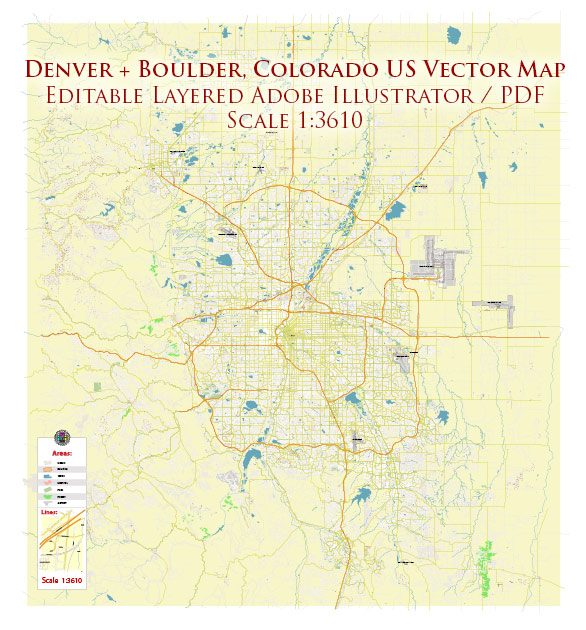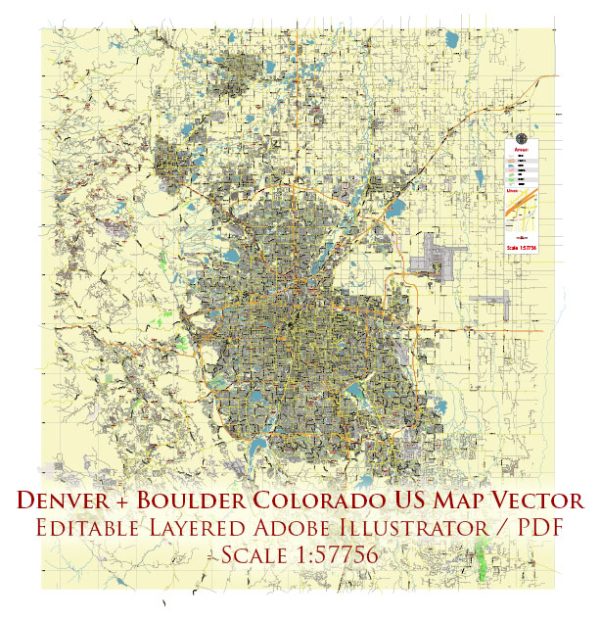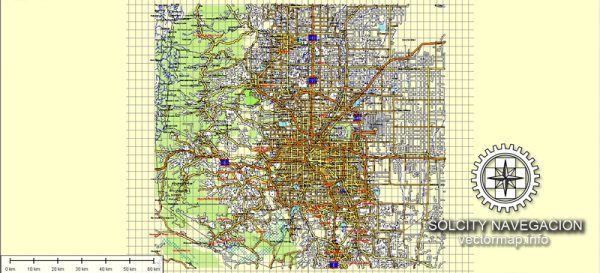Denver and Boulder, located in Colorado, USA, are known for their stunning natural beauty and unique ecological characteristics. The region features a diverse range of ecosystems, with a mix of high plains, foothills, and mountain environments. Here’s an ecological description of the Denver and Boulder area:
- High Plains Ecosystem:
- Denver is situated on the High Plains, a vast, flat, grassland region. This area is characterized by semi-arid conditions with relatively low annual precipitation.
- The flora in the high plains includes native grasses like buffalo grass, blue grama, and sagebrush.
- Foothills and Canyons:
- As you move west from the high plains, you encounter the foothills of the Rocky Mountains. Boulder is nestled at the base of these foothills.
- The foothills are home to a variety of plant species, including ponderosa pine, Douglas fir, and aspen trees.
- Wildlife in this area includes mule deer, elk, and various small mammals.
- Mountain Ecosystem:
- The Rocky Mountains dominate the landscape to the west. These mountains are part of a complex and diverse ecosystem.
- Coniferous forests dominate the higher elevations, with species such as lodgepole pine, spruce, and fir.
- Alpine tundra can be found at even higher elevations, characterized by hardy, low-growing plants adapted to extreme conditions.
- The mountains are inhabited by a variety of wildlife, including black bears, mountain lions, bighorn sheep, and a wide range of bird species.
- Riparian Areas:
- Along the many creeks and rivers in the region, riparian areas offer a contrast to the arid plains and alpine environments. Cottonwood trees, willows, and other water-loving plants thrive in these areas.
- Riparian zones support diverse bird populations, amphibians, and aquatic life.
- Weather and Climate:
- The region experiences a semi-arid climate, with relatively mild winters and warm summers in the Denver area. Precipitation is typically lower in this part of Colorado.
- Boulder, being closer to the mountains, experiences slightly cooler temperatures and potentially more precipitation.
- Human Impact and Conservation:
- The Denver-Boulder area has experienced significant urban development, which has led to habitat fragmentation and impacts on local wildlife.
- However, there are strong conservation efforts in place, with numerous parks, open spaces, and protected areas to preserve the natural beauty and ecological diversity of the region.
- Recreation and Tourism:
- The area’s ecological diversity, combined with its proximity to the Rocky Mountains, makes it a popular destination for outdoor enthusiasts. Activities include hiking, rock climbing, skiing, and wildlife watching.
- The area’s ecological diversity, combined with its proximity to the Rocky Mountains, makes it a popular destination for outdoor enthusiasts. Activities include hiking, rock climbing, skiing, and wildlife watching.
- Challenges:
- Like many regions, Denver and Boulder face challenges related to climate change, including increased temperatures and altered precipitation patterns, which can impact ecosystems and water resources.
In summary, the Denver and Boulder area is a unique ecological zone in the United States, where the transition from high plains to foothills and mountains creates a rich variety of ecosystems. While urban development has had an impact, there are ongoing efforts to conserve and protect the region’s natural beauty and ecological diversity.




 Author: Kirill Shrayber, Ph.D.
Author: Kirill Shrayber, Ph.D.